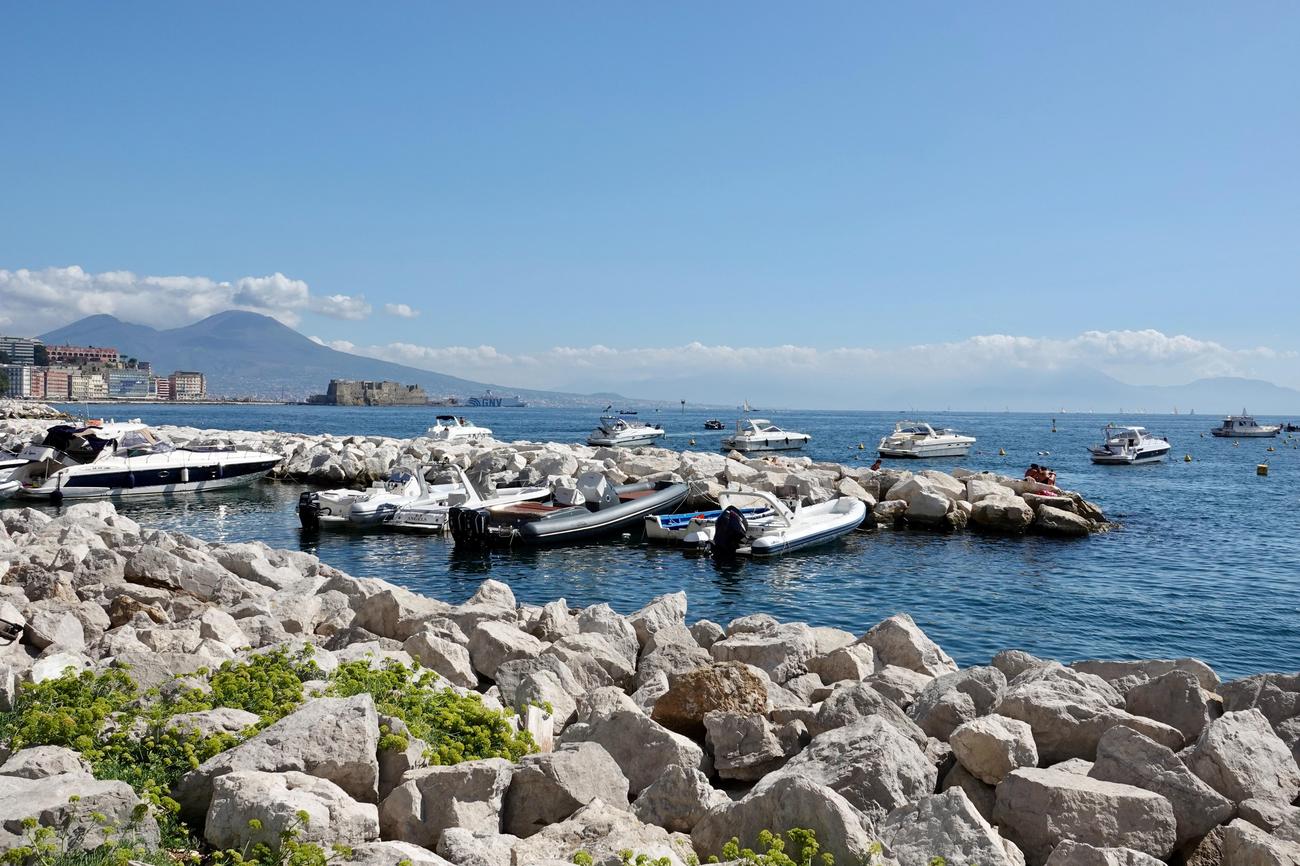Unveiling the Truth: Is Naples Italy’s Oldest City?

Join me on a captivating journey through time as we delve into the age-old question that has left scholars and enthusiasts alike pondering for centuries: Is Naples truly the oldest city in Italy? As an experienced historian and expert in ancient civilizations and Italian heritage, I have devoted countless hours to unearthing the origins of Italy’s cities and shedding light on their intriguing pasts. In this enlightening article, we will embark on a quest for historical accuracy, armed with archaeological findings and a comprehensive understanding of Italy’s rich history. Brace yourself for a deep dive into the annals of time, as we uncover the truth behind Naples’ claim to the title of Italy’s oldest city.
Is Naples the oldest city in Italy?
Naples, a city with a rich historical background and cultural heritage, has long been regarded as one of the oldest cities in Italy. But the burning question remains: is Naples truly the oldest city in Italy? Let’s delve into the depths of history and uncover the truth.
A Journey through Time: Naples has a remarkable lineage, tracing its roots back a staggering 4,000 years. Imagine the stories this ancient city could tell—if only its cobblestone streets could speak! Naples’ first brush with existence came in the first millennium BC when it was founded by the Greeks. Originally known as Parthenope or Palaepolis, it later evolved into Neapolis, meaning “New City,” in 470 B.C., cementing its status as a flourishing urban center.
A Cosmic Conundrum: So, how does Naples’ age measure up against other Italian cities? While Naples proudly stands as the third-largest city in Italy, ranking just after Rome and Milan, its claim of being the oldest city in Italy has faced some contention. The intricate tapestry of Italian history weaves together a multitude of ancient settlements, each with its own unique origins and ancient roots. To accurately determine the oldest city in Italy, we must embark on a quest through time and explore the annals of the Italian peninsula.
Unraveling the Oldest Threads: As we dive into history’s depths, we encounter ancient cities such as Rome, Florence, and Pompeii—each with a compelling narrative harkening back to antiquity. These cities, like Naples, showcase a rich tapestry of historical marvels and cultural treasures. While Naples lays claim to a continuous habitation that spans millennia, its rivals possess their own storied pasts. To draw a definitive conclusion, we must evaluate the evidence through a lens of careful analysis.
Monuments of Time: Nestled in the heart of southern Italy, Naples boasts an array of historical buildings and monuments that bear witness to its ancient origins. From medieval castles to classical ruins, its landscape is a testament to a bygone era. The UNESCO World Heritage Site of Naples’ historic city center is a haven for history enthusiasts, with its intricate web of alleys, churches, and squares providing a tangible link to the city’s illustrious past.
A Taste of Italian Heritage: Beyond its architectural splendors, Naples is renowned for its delectable cuisine. The city’s culinary prowess unfurls like a vibrant tapestry of flavors, with the iconic pizza, pasta, and seafood dishes tantalizing taste buds around the globe. As we savor the flavors of Naples’ traditional fare, we can’t help but appreciate the culture and history that have shaped this beloved cuisine.
A City Alive: With a population of approximately 909,048 residents within its administrative limits and over 3 million in the wider metropolitan area, Naples pulsates with life—a testament to both its historical significance and modern vitality. The city’s Mediterranean climate, characterized by mild winters and hot, dry summers, further contributes to its allure as a vibrant cosmopolitan center.
In conclusion, while Naples undeniably stands as one of the oldest cities in the world, the title of the oldest city in Italy is a complex and intriguing puzzle. As we peel back the layers of history, we uncover an array of ancient settlements vying for this prestigious honor. Ultimately, determining the oldest city in Italy necessitates a meticulous study of archaeological evidence and a comprehensive understanding of historical context. So, Is Naples the oldest city in Italy? The answer, my dear reader, lies within the labyrinth of time itself—a conundrum awaiting further exploration.
“History’s whispers weave a tapestry of tales, but the title of Italy’s oldest city remains veiled—a riddle only time can unravel.”
Naples, Italy is a fascinating city with a rich history and vibrant culture. If you want to uncover some intriguing fun facts about Naples, Italy, look no further! Our comprehensive list of fun facts about Naples, Italy will leave you in awe. Discover how Naples became the birthplace of pizza or delve into the city’s mythical connection to sirens. From stunning architecture to delicious cuisine, there is something for everyone to enjoy in Naples. So, dive into the captivating world of Naples, Italy and explore the hidden treasures that await you. Check out our list of fun facts about Naples, Italy right here.
Naples City Guide: Exploring Italy’s Vibrant Cultural Hub
[youtube v=”AfoIwtI8IFc”]
Naples, also known as Napoli, is a hidden gem that travelers often overlook. However, this bustling city is a treasure trove of winding cobblestone streets, authentic pizza, and true Italian charm. Situated on Southern Italy’s western coast along the Gulf of Naples, it is the third largest city in the country. With a rich historical background and a vibrant cultural scene, Naples offers visitors a unique and unforgettable experience.
A Historical Legacy
Naples is a city with a rich and ancient history, making it one of the oldest inhabited settlements in Italy. Its origins can be traced back to the first millennium BC when it was founded by the Greeks. Originally known as kumei, it later evolved into Neapolis, meaning “New City,” in 470 B.C. This ancient city became a prominent center of culture and commerce in ancient Greece.
Over the centuries, Naples saw the rise and fall of various empires, including Roman, French, and Spanish rule. Each empire left its mark on the city’s architecture and culture, creating a unique blend of styles. Despite facing challenges such as the plague, economic downturns, and earthquakes, Naples has continuously thrived and transformed into a vibrant hub of history and culture.
Naples: The Birthplace of Pizza
Renowned as the Italian food capital, Naples is the birthplace of one of Italy’s most famous culinary creations – pizza. Pizza and Naples go hand in hand, and this city offers a variety of traditional and modern pizzerias in every neighborhood. From the classic Margherita pizza with mozzarella and tomato to the mouth-watering fried pizza, Naples is a haven for pizza lovers.
Exploring the City’s Must-See Sights
Naples boasts a plethora of historical buildings, landmarks, and cultural sites. One of the city’s largest squares is the Piazza del Plebiscito, where the Royal Palace and the church of San Francesco di Paolo are located. This square was transformed into a pedestrian-friendly area, allowing visitors to stroll and enjoy the architectural marvels.
Don’t miss the iconic Castle dell’Ovo, which is situated on a small island and offers breathtaking views of the Gulf of Naples. This fort with Norman origins takes you on a journey through history with its gothic halls, towers, and ruins.
Immerse yourself in the beauty of the Galleria Umberto, a 19th-century structure that was originally built as a public area for businesses and cafes. Today, it houses an array of shops, eateries, and cafes, all adorned with stunning paintings and sculptures.
For football enthusiasts, a visit to the Diego Armando Maradona Stadium is a must. Home to SSC Napoli, this stadium exemplifies the city’s passion for the sport and provides a thrilling atmosphere during matches.
Pompeii and Mount Vesuvius: Time Capsules of History
Located a short distance from Naples, the ancient city of Pompeii offers a glimpse into the past. Buried under volcanic ash from the eruption of Mount Vesuvius in 79 A.D., Pompeii remained undiscovered for centuries. Today, it is a UNESCO World Heritage site and attracts millions of visitors each year who come to marvel at the remarkably preserved ruins.
Speaking of Mount Vesuvius, this active volcano stands as a prominent tourist attraction near Naples. Many adventurous travelers climb the volcano to witness its power and gaze into its depths. The ascent to its summit is relatively easy and can be undertaken by anyone, offering panoramic views of the surrounding area.
In conclusion, Naples is an Italian city packed with history, culture, and culinary delights. From its ancient origins and architectural wonders to its renowned pizza and proximity to Pompeii and Mount Vesuvius, Naples offers a truly immersive and unforgettable experience. So, next time you plan your trip to Italy, be sure to include Naples on your itinerary. As the saying goes, “Vedi Napoli e poi muori” – “See Naples and die” – because once you experience its charm, you’ll feel like you’ve lived a lifetime.

FAQ
Question 1: What is the historical significance of Naples in Italy?
Answer: Naples holds immense historical significance in Italy as one of the oldest cities in the world, dating back approximately 4,000 years. It was first established by the Greeks in the first millennium BC, known as Parthenope or Palaepolis. Later, it was re-established as Neapolis (New City) in 470 B.C. This rich history makes Naples one of the oldest continuously inhabited cities in the world and a treasure trove of archaeological findings.
Question 2: Is Naples considered the oldest city in Italy?
Answer: Yes, Naples can indeed claim the title of being one of the oldest cities in Italy. Its origins trace back to ancient times, as mentioned earlier. With a history spanning centuries and its continuous habitation, Naples stands as a testament to Italy’s ancient civilizations.
Question 3: What are some notable landmarks in Naples?
Answer: Naples is renowned for its impressive collection of historical buildings and monuments. Some notable landmarks include the Church of Santa Chiara and Castel Nuovo. These structures showcase ancient architecture and provide a glimpse into the city’s vibrant past.
Question 4: Is Naples’ historic city center recognized as a UNESCO World Heritage Site?
Answer: Yes, the historic city center of Naples holds UNESCO World Heritage status. This recognition highlights the importance of the city’s cultural and historical significance, preserving its rich heritage for future generations.
Question 5: What is the population of Naples?
Answer: The population of Naples is approximately 909,048 within the city’s administrative limits. The wider metropolitan area of Naples is home to around 3,115,320 residents. As the third-largest city in Italy, Naples plays a significant role in the country’s cultural and demographic landscape.
- Crypto Quotes’ Red Flags: Avoid Costly Mistakes - June 30, 2025
- Unlock Inspirational Crypto Quotes: Future Predictions - June 30, 2025
- Famous Bitcoin Quotes: A Deep Dive into Crypto’s History - June 30, 2025
















